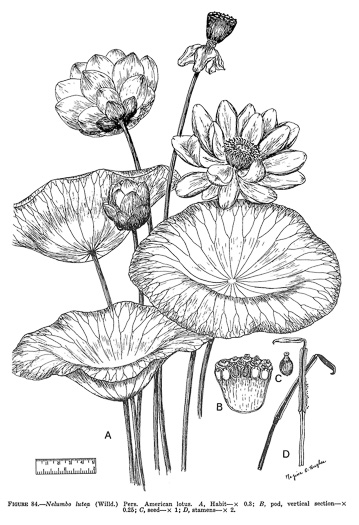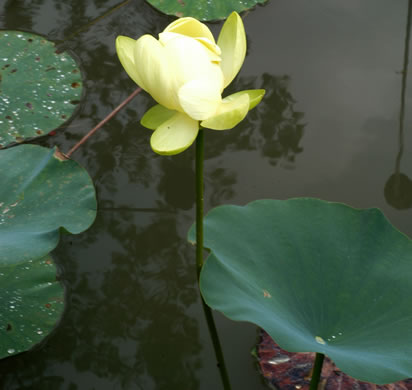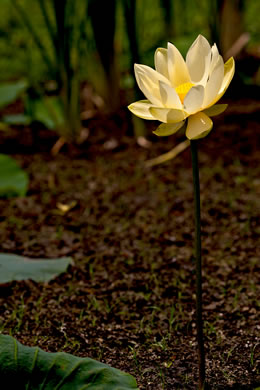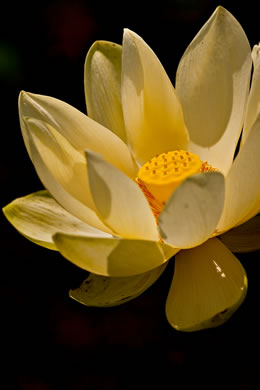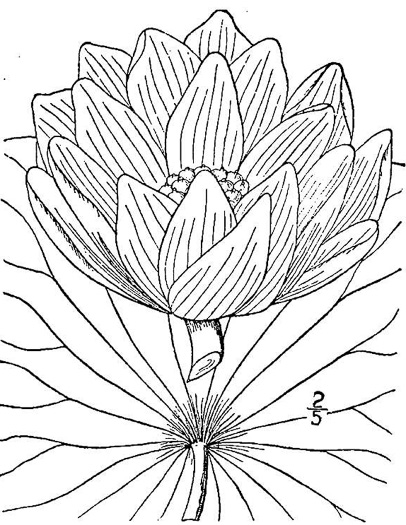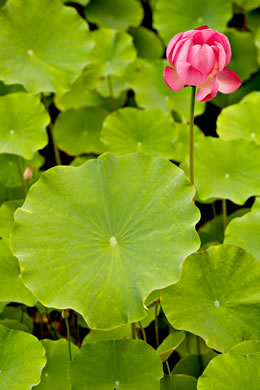Hovering over an image will enlarge it and point out features (works better on desktop than on mobile).
![]() A camera indicates there are pictures.
A camera indicates there are pictures.
![]() A speaker indicates that a botanical name is pronounced.
A speaker indicates that a botanical name is pronounced.
![]() A plus sign after a Latin name indicates that the species is further divided into varieties or subspecies.
A plus sign after a Latin name indicates that the species is further divided into varieties or subspecies.
Most habitat and range descriptions were obtained from Weakley's Flora.
Your search found 2 taxa in the family Nelumbonaceae, Sacred Bean family, as understood by Vascular Flora of the Carolinas.

![]()
![]() Common Name:
Yonkapin, American Lotus-lily, Yellow Nelumbo, Pond-nuts
Common Name:
Yonkapin, American Lotus-lily, Yellow Nelumbo, Pond-nuts
Weakley's Flora: (4/24/22) Nelumbo lutea FAMILY: Nelumbonaceae
SYNONYMOUS WITH PLANTS National Database: Nelumbo lutea FAMILY: Nelumbonaceae
SYNONYMOUS WITH Vascular Flora of the Carolinas (Radford, Ahles, & Bell, 1968): Nelumbo lutea 074-01-001 FAMILY: Nelumbonaceae
Habitat: Ponds, natural lakes, sluggish streams, freshwater tidal marshes
Uncommon
Native to the Carolinas & Georgia

![]() Common Name:
Sacred-lotus, Oriental Lotus-lily, Pink Lotus
Common Name:
Sacred-lotus, Oriental Lotus-lily, Pink Lotus
Weakley's Flora: (4/24/22) Nelumbo nucifera FAMILY: Nelumbonaceae
SYNONYMOUS WITH PLANTS National Database: Nelumbo nucifera FAMILY: Nelumbonaceae
SYNONYMOUS WITH Vascular Flora of the Carolinas (Radford, Ahles, & Bell, 1968): Nelumbo nucifera 074-01-002 FAMILY: Nelumbonaceae
Habitat: Ponds, lakes, canals
Rare
Non-native: Asia
Your search found 2 taxa. You are on page PAGE 1 out of 1 pages.

